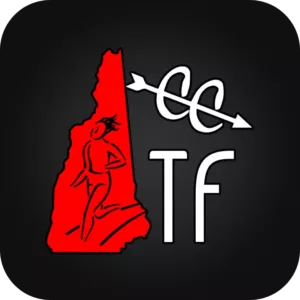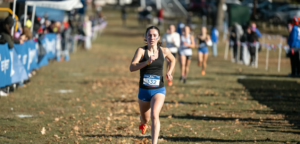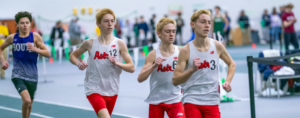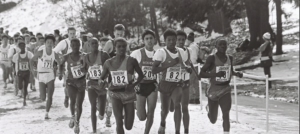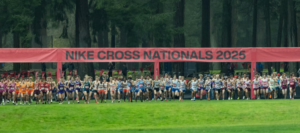By Mike Smith – Mascenic
I came up with the idea of a Coaches Round Table for NHCC, a format where a handful of coaches discuss an area of interest to give some insight into what “makes their programs tick.” For me at the Division 3 level where we’ve seen reasonable success over the past 13 years or so, I tend to field questions surrounding the tenants of our success. More than willing to share the wisdom I have gleaned, learned, stolen over the years, I contemplated the best way to share that information to the newer coaches looking for a direction for their program, and those in the game a while, looking for different methods for reaching success.
So in this first installment of the Coaches Round Table I contacted other coaches in Division 3 that I look up to for the consistency in their program as well as the high level of competition their teams exhibit day in, day out. I hope other coaches out there don’t feel snubbed, as another big determining factor in choosing coaches was those I already have a strong relationship with and more importantly, their emails.
I hope you enjoy this installment and get some information you can incorporate in your programs for the future. We would love to have other groups of coaches contribute their input as well, either with regard to the points discussed in this Round Table, or to come up with a different area of interest to discuss.
The coaches interviewed for this Round Table were Ernie Brake and Peter Angus of Kearsarge, Rob Nadeau of Hopkinton, James Porter of the Derryfield School, and Mike Smith of Mascenic.
The greatest amounts of questions I get regarding the strength of our program revolve around the philosophy of the program. What do you see as the foundation of your philosophy?
Peter Angus, Kearsarge – Make it fun, hold kids accountable, and show them how much you care about the sport and them. This means that as a coach you must be all in and be willing to sacrifice along with your team.
Anyone can run. Meet them where they are at and help them to improve.
Ernie Brake, Kearsarge – the three P’s.
Passion – you have to love the sport. The athletes need to see their coaches’ enthusiasm, dedication, and knowledge of the sport. Patience – it’s a gradual build and coaches and runners gain from patience to support perseverance. Personal – you need to know your runners and build personalized relationships with each one. Through knowing your runners, a coach can support their runner to reach his or her personal potential. Spend time with your runners outside of practice.
James Porter, Derryfield – At the Derryfield School we are attempting to build a program. The school does not have a track team (indoor or outdoor) and XC was coached by the art teacher who was not a runner. They do not have gym class so everyone is required to participate in 2 sports. With only 240 kids in the school and D-4 powerhouse in soccer (boys) and Field Hockey (our AD is a former Olympic coach) XC was the “other” sport. I was hired at the urging of a few parents from the local running club who’s kids run for the team. I got here in the fall of 2014 & we had a small group (3 boys, 1- girl) of dedicated runners, 6-7 athletes who played other sports (or bench warmers) as their primary activity and a bunch (10)of band/art/exchange students who needed sports credits.
The main Philosophy is to train everybody according to their goals and abilities and turn no one away. 3 basic silos. Those who want to run in college get the “C” plan. Athletes with less than 1000 miles in their legs or no real summer training get the “B” plan with hopes they move up into the “C group”. With new runners I try to get them to like/love it. Give them a basic understanding of the sport and try not to get them hurt. I pitch the idea that running is a lifetime sport. It will keep you healthy, establish a cool group of friends & make you better human. You will get to test yourself, push yourself & crush yourself in way they have never experienced before. To boldly go where they have never gone before!
I just heard 2 weeks ago that they have made spring track an official sport for this year so I will finally have continuity. That’s a big step.
Main Philosphy: HAPPY AND HEALTHY: If you’re not happy you won’t keep running and if you are not healthy you will not keep running. The only way to get better is to keep running.
“Everybody wants to know the secret to getting better….the fact is, there is no secret. You get better by removing, molecule by molecule, the rubber from the bottom of your trainers” – –Quenton Cassiday
Rob Nadeau, Hopkinton – I think with all endurance athletics that it is important to stress with kids that airplanes have what is known as an “angle of attack” when taking off; too shallow and the plane never gets off the ground and too steep will ensure a crash. Training should be a gradual process with the athlete’s long term best interests in mind.
First, in XC, that means taking kids form where they are and gradually adding distance, strength and speed. Lots of freshmen might want to do the same mileage as juniors and seniors, but I think that is a recipe for disaster. So the program tends to group kids by age and ability and workouts are structured accordingly. On any given day there could be a number of groups with the same goal but different workouts.
Second, kids want to feel like they are a part of something and that they have improved. So creating a safe environment where the young learn from the old, and that each runner can see performance and behavior goals being met is important to me. Kids write a performance and behavior goal prior to each race. I read them and give feedback if warranted.
Third, I stress an environment with clear structure and expectations for independent behavior. Being responsible for their own gear, their own fuel, etc…. I see no reason why any athlete can’t show up at a race/practice having packed his own bag, lunch or post race food and adequate beverages.
Mike Smith, Mascenic – We haven’t undergone any major changes to our philosophy as the program is still similar to what brought us success back in 05-06-07, and we had plenty of individual success since then, but I do think that the longevity of the program’s success has finally caught up with the student body. I thought for sure when we won in 05 that the next year we would have kids tripping over themselves to join a winning program but that wasn’t the case. All I got was one of the kids on the team’s brother.
I think now, the kids that are looking to challenge themselves and see what they are made of, know to give cross country a try, and that the worst that will happen is they will get more fit. This past year we had a lot of kids join to get in or stay in shape for other sports. I think signing up for something as hard as cross country is easier if the kids know they will have a chance to participate in something that could see them earn a State Championship.
What are some of the general training principles of your program?
Smith: Again, the program is relatively the same year to year. However I would suspect that over ten years the workouts might become quite different but the idea is the same. We add and get rid of something every year I imagine. Also different aspects/workouts might take on different significance based on the athletes, the race schedule, or that seasons goal.
Our training is primarily strength based. We don’t do much in the way of speed work, as our facilities don’t really allow for it. But we do quite a bit of at pace running. And all of our repeat work is continuous, with active recovery. Just a good mix of hills, long runs, and tempo style work.
Nadeau: Weekly practices are fairly consistent, especially since we have adopted the racing only once a week mantra. (I really think this model should be adopted across the state. When I wasn’t coaching XC, I was always amazed by the kids coming into Nordic season wiped out by the “lactic acid bath” that a twice a week race schedule promotes).
Monday & Wednesday is distance, hills or tempo. Tuesday is speed work. Thursday is an off day and Friday we do a short pre-race regimen. Race on Saturday!
Sundays are on your own; some kids bike, roller-ski, swim or do an easy recovery run.
I emphasize proper rest, nutrition and sleep as much as I do the need hit their interval targets on Tuesday. Again, the goal is to get them to be well-balanced, life long endurance athletes who understand the benefits of living a healthy balanced lifestyle.
I think the most difficult thing about general training is to get kids to actually train in the summer time. (If anyone has the magic ticket for that I would love know what it is?) Obviously it is so much easier to start with a nice foundation instead of trying to build the house from scratch every August. As we all know, there is no free lunch (Economics is everywhere!) and athletic success is a function of simple practices put in place over long periods of time. Simply put hard, consistent effort pays off.
Porter: It has been said XC is a summer sport where you race in the fall. For my dedicated runners I post training plans in the winter and summer on our team Facebook Page.
I am a big Jack Daniels guy (running at a specific % of max heart rate to control effort) . I have read a lot of Arthur Lyidard, Mark Whetmore & Greg McMillian. So I try teach a lot about heart rate training and how running should feel (since HR watches are expensive). With so little flats in NH running off pace can be a dart throw. I also promote minutes run as opposed to miles run. The kids have such a range of abilities on my team (in 3 races this year we had a runner finish 1st and last), asking everyone to run the same loop or distance wouldn’t work.
Brake: Consistency – I’m old school and believe you have to put the work in, run the miles, run the hills, and focus on strength before speed. Base work is the foundation.
Variety – Athletes like variety in their training and incorporating some fun. Our team has a variety of special runs and traditions, including the Time Capsule run, the McDonald run, the Kearsarge run, the Klondike run, the shoe-tying event, and the Tire of Truth. The list goes on.
Angus: We have a large team and at times need to split the group up based on ability. Thus, we are patient with new runners and make sure to find ways to push our veterans.
Are there any training specifics you’d like to share?
Brake: Classified Information
Angus: We work on getting our runners stronger by building a good base of miles and only then do we start working on speed…
Nadeau: I have adopted the Jack Daniels approach, especially in regard to determining intervals. My approach tends towards shorter intervals (200’s) early and building towards longer intervals (800’s) mid-season and then back down the ladder. The kids seem to really understand the model and can track their own efforts and expectations. It also allows for training groups that are logical across genders.
Smith: We have a couple signature workouts we use as diagnostic to see where we are throughout the season. With a dirt track I feel comfortable running hard and recording our efforts on 5×7 index cards so the kids can see their progress during the season. While we tend to focus our “speed work” on end of season goal pace times, we tend to add to the number of repeats rather than increase the pace. As far as what we do for workouts, it tends to be a mix of 500’s, 300’s, 200’s, and for our long stuff, 1200’s. Even the 200’s are at goal pace. Some people think that’s too short but if you do enough of them it can add up to some mileage. We also do some sort of hills every week from the beginning of the season up to Belmont. Belmont is its own hilly challenge so the race is that week’s hill work!
Porter: As I have said we do 3 silos. On a basic aerobic day last week A group did 30 min / B group / 40 min / C group 55min.
We do about an 80/20 mix of aerobic (80%) to hard stuff (20% mix of races / tempo / interval). Each group gets a different set of parameters for interval work w/ specific paces based off current fitness with some goal work mixed in the second phase (see below).
I break the season up into 3 phases for the 12 week season. 4 weeks strength building. 4 weeks speed building, 4 weeks of sharpening & tapering for championship season.
We do some track work to teach pace’s but since we don’t race on a track we use a flat field I measured for most speed work. We also use our campus for lots of work on how to run up and down hills efficiently.
Lastly, I was a 400m runner and Pole Vaulter at U of Delaware and try to teach the kids how to sprint and kick. We build up VERY slowly to this. One month of drills before they attempt to get up on toes. Kids that are still growing can get hurt quickly as the force ratio changes dramatically when you reduce the surface area of the force applied (from heal striking to forefoot striking to up on the toes).
What is the perception of this sport at your school? Does that have an effect on turnout or the support you get from within and outside the school community?
Porter: As a parent of one of my best runners told me when I took the job “Welcome to the red headed stepchild of Derryfield Athletics”. It seemed the school never really thought of the sport that seriously. That said the AD and Head of School have been very supportive of changing this perception. The motto of the school is to teach kids to “live a life filled with passion and purpose” and it seems the things I am trying to teach the kids fits into that mold. As I stated before we finally have a track team!
Parental support is outstanding. The kids at the school have very involved parents and want for nothing. Often times I am trying to get the parents to put less pressure on them or not give conflicting advice. Not the worst problem to have I guess.
Smith: When I started coaching at Mascenic, I think there was one other person in town who ran. I know when we started to up the mileage and finally make some headway in the D3 ranks, even the kids parents questioned the amount the kids were running. Now I go out and marvel at the number of people out running in the community. Even with all the parents whose kids are running to stay in shape don’t question what we do anymore.
Other sports still reign supreme in the district, even one’s that haven’t been too successful in a while, but cross country no longer is treated like the red headed stepchild. The athletes are recognized in the school as being some of the best athletes in the school and in the State.
Our parents are very supportive of our program. Many of them have seen benefits outside running in their kid’s lives. Better grades, healthier habits, so they’re very supportive. I don’t think the district has actively got behind what we do but we’ve begun to be supported by our MS program as well as an initiative down at the elementary school. There they have a running club that has the kids out running twice a week. I think that will be a big help down the road as the kids may come to the sport recognizing it’s a viable option for sport. Then at the MS they get the option to run cross country and track and we’ve seen an increase in participation in those programs too.
Nadeau: While we have the same challenges that have always existed for XC, “kids who do team sports are considered athletes, XC runners are just that, runners”, because of the success the programs have had over the years there is a lot of respect amongst their peers. The community has always been very supportive and there are excellent feeder programs through Hersey Track and Middle School XC. Our challenge is keeping them when they come into the high school as kids will often follow their friends into whatever activity the “group is doing”. In that regard, the feeder programs become critical in creating those peer groups.
Brake: We are not a big, glamour sport like football. However, we don’t care. People admire what we do and our endurance, but we are a unique group. The athletes are not looking for glamour and understand hard work and dedication.
Parents support with community dinners, photography, and showing up to encourage their children. Longtime runners and coaches support one another through breakfast meetings, telephone consultations, and encouraging emails. Using the strength of the team’s coaches and volunteers, our overall team is stronger.
Angus: We are considered to be a weird sport and I love it. I would encourage a new coach to embrace this perception. We make up goofy names for different runs. We plan annual runs each year, build up some hype around them, and get the kids excited. I would encourage a new coach to try to “partner up” with the Nordic coach or a track coach. Who are there athletes? Are they doing XC as well? If not, try to figure how to work with them to build your numbers. Food- we do a parent sign-up to bring the team food for after/before races. Administration – fully support us. They have never said no, to any support that we have asked for.
What’s next?
Brake: Classified Information
Angus: We started doing a running camp this year. A community member donated the use of a camp, the kids came up with $$ for food. We ran, swam, hiked, went to the movies….. it was really fun.
Porter: Just keep going I guess. Look to build the track team and start working with the middle school to change the attitude there. Would like to get some freshman with some base aerobic fitness and understanding on how to race. Most Freshman are very raw.
Smith: Well hopefully we will be able to continue building on the success we currently have. Keep having kids come to the HS, both interested and ready to run with an understanding of what is expected of them and of what they can expect.
Nadeau: I think good coaching is good teaching. We have to have clear vision of where we want to go and how we plan to get there. The kids need to understand, respect and buy into that vision. Coaches provide the structure and the feedback to help them realize their goals.
Thanks to the coaches for being willing to divulge what makes their programs tick. Other coaches that want to get in on the action, email your thoughts to





